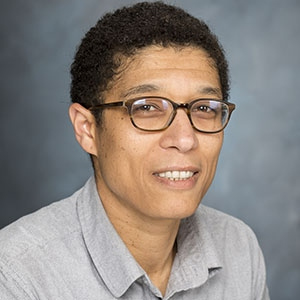Christina Morency

May 28, 2021
What do you like about working at the Lab?
I like the diversity of projects I am exposed to and involved in. The Lab is a big place, and as I like to tell people I meet at recruiting events, regardless of your field of expertise, the Lab has a directorate/division/group for you! The breadth of work done at the Lab and the contributions that are made to so many different fields is impressive. I also genuinely like our moto—science and technology on a mission. I think it is rewarding to assist on projects and programs that are relevant to us all.
What do your day-to-day work activities include?
I spend most of my day in front of a computer running numerical simulations, debugging codes, writing scripts and the like, and reading articles. The rest of the time, I attend meetings to discuss given projects with colleagues, or seminars. These days, as I am PI on a project, I also have to dedicate a portion of the day to managing and reporting.
What is one project you’re really proud to have worked on?
It’s actually a project that I am the PI on and that just started. Our team is assessing the practical use of seismoelectric effects for geothermal resources monitoring in an integrating approach using numerical modeling, laboratory experiments, and ultimately field experiments. It’s an international team with colleagues in France and Norway. I am particularly excited because I thought about exploiting and modeling seismoelectric effects, which are subsurface pore scale phenomena related to seismic-to-electric conversion, as a natural next step following a project I worked on as a postdoc just before joining the Lab ten years ago. Fast forward six years, and I was awarded a LDRD Lab wide, an internal funding program, to numerically model these phenomena. Building on that work, I am now collaborating with a multidisciplinary team to move what is still a novel technique to the next level of practical use. It doesn’t get more exciting!
What is your educational or career background?
My background isn’t linear, as I am originally a chemical engineer who went on to pursue a PhD in geophysics, with a thesis on geodynamical modeling of Earth mantle convection and its interaction with the lithosphere, in France. Over the course of my subsequent postdocs and research associate position, in Canada and the US, I changed the scale of my focus from modeling Earth mantle convection to modeling tectonic deformation at the crustal scale, and finally, to simulating seismic wave propagation to probe the subsurface. I joined the Lab ten years ago and focus my work on using both seismic and electromagnetic modeling for geophysical imaging and monitoring.
What inspired you to go into science?
I always liked STEM in general and how science helps us understand the world around us and how things work. Paradoxically, I like the level of certainty associated with science, but also the questioning and unknown that is part of a researcher’s life. It’s also this balance between having a specialized knowledge and keeping a beginner’s mindset to solve problems.
What advice would you give to a new employee at the Lab?
Be curious. The Lab is a great place to be exposed to a wide range of disciplines and programs. My experience is that all levels, from colleagues, supervisors, group leaders, and up, are eager to help and assist, so don’t hesitate to show up, speak up, and reach out.
What do you do in your free time?
I like reading, watching movies (yes, I am a Marvel person), and enjoying the many diverse and excellent cuisines in the Bay Area. My wife is a theater nerd, so I also get dragged to plays and musicals…a lot. I am also a member of the African American Body of Laboratory Employees and on the leadership team of Livermore Pride. I am particularly passionate with the inclusive and educative work we have started with Livermore Pride this past year on pronoun usage in the workplace.
Learn more about Christina:
Biography




